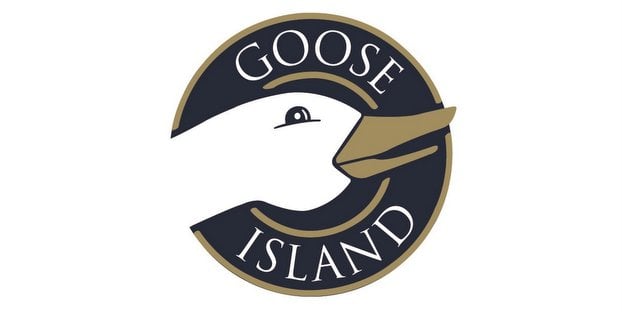
For years, I have had the enviable position of being one of the resident craft beer experts at Bank of America Merrill Lynch, a role that on occasion inspired jokes or smirks among colleagues and friends. But the amazing rebirth and resurgence of the industry in North America over the past few years has largely put an end to any skepticism about the importance of craft beer to the overall beverage industry: According to the Brewers Association, U.S. craft beer sales increased by 17.6 percent in 2014.
As consumers keep demanding the varied tastes of craft beer, new investment and funding opportunities are opening up for craft brewers. In fact, thanks to the growing consumer interest and buzz about the offerings, more IPOs and M&A deals will likely start cropping up for the industry.
These investment tools are coming just in time: Craft brewers around the country are working hard to expand brewing capacity, build new breweries, distribute in new regions and increase innovation to meet this consumer demand. But investment tools vary widely so brewers looking to increase their operations must first carefully consider their existing operations and their long-term goals. Here are some important considerations for breweries looking to expand.
Growth strategy of the business
As businesses scale up in revenue or volume, the existing operations often must be changed. This is particularly true for craft breweries, which are by definition limited to smaller batches. At the same time, consumers expect continuous innovation from craft beers, and brewers must work hard to keep the loyalty of their consumers with new and interesting products.
In this dynamic industry, brewers must be able to articulate their short- and long-term priorities, in terms of a business model, to the investment community. For instance, in the short-term, the priority may be to expand the tasting room or increase social media presence to introduce their products to more customers and gain more local market share. In the long-term, the priority could be to increase the number of tanks at the brewery, or even build a new brewery in a new market, to keep up with demand.
Each business model carries a different appetite for risk, which can lead to a number of questions about capital expenditures and steps for improvement. Once the growth strategy is articulated, brewers can consider questions about funding existing and future operations and determine sources of funding. For instance, are the long-term desires and expectations of founders aligned with investors? Will the brewer be able to pay back a loan during difficult phases of the business? What is the cost of the capital? If there are equity partners, are they expecting current returns and when?
Recently, Los Angeles-based Golden Road Brewing acquired a building in Anaheim, Calif., to build a new brewery. This project, which included funding facilitated by Bank of America Merrill Lynch, will enable Golden Road to double its brewing capacity to meet the continued growing demand. Additionally, this expansion will make Golden Road one of the largest brewers in Orange County, furthering its brand in the local market. As an added benefit, the brewery is located in the highly desired “Platinum Triangle” which includes Disneyland, the Anaheim Convention Center and the Angel Stadium of Anaheim. Golden Road Brewing’s investment in the market and community will garner long-term brand recognition that will lead to more demand and continued success.
Strategic alternatives
Some brewers are seeking partnerships with other like-minded brewers rather than going it alone. This “craft-on-craft” deal strategy allows smaller breweries to combine their distribution networks and sales forces. This was the case when Green Flashing Brewing Co., of San Diego, purchased Alpine Beer Co. Company leaders said the acquisition would result in a merged distribution system but with separate beer brands. Though this M&A strategy can create some conflicts if breweries share the same markets, the consolidation among entrepreneurial breweries can benefit both companies in terms of market awareness, brewing efficiencies and shared resources. It is interesting to see this sort of M&A activity, which brings together relatively equal partners that are largely committed to the ideals of craft beer.
This is in contrast to a seminal transaction in 2011, when Anheuser-Busch InBev acquired Goose Island as a way for the global brewer to gain entry and credibility in craft beers. A-B has continued this strategy with its acquisitions of Blue Point Brewing Co., Elysian Brewing Co. and 10 Barrel Brewing Co. during the last few years. Though the two leading global brewers are still likely looking to grow their footprint by continuing to acquire craft breweries, there are more opportunities for and interest by craft brewers to pursue their growth strategies needs by combining with other craft brewers or seeking private equity investors.
Another popular capital strategy in the craft brewer sector is Employee Stock Ownership Plans, or ESOPs. While not used to fund a brewer’s growth needs, ESOPs are an attractive option for founders who want to reward their employees, especially those that have been with the company for some time, provide a way for employees to be vested in the company and to for the shareholders to receive some liquidity. Under the agreement, a trust is established that acquires shares from the existing shareholders, typically using a bank loan guaranteed by the company. Those shares are then granted to the employees who are vested over a pre-determined time frame. ESOPs are a tax efficient way for owners to realize a return on their privately held business while providing wealth generating opportunities to their employees.
Hold up. Why don’t you take a sec to ensure you understand everything above? Then click “Next” to continue reading.






Craft beer capital strategies: Expansion, grow distribution http://t.co/0RyWJHLRYD via @craftbrewingbiz
RT @JoshuaTreeBrew: Craft Beer Business – Capital strategies: Expansion, grow distribution http://t.co/ltSs5EE9lU #craftbeer
Serge Lubomudrov liked this on Facebook.
Jared Read liked this on Facebook.
RT @CraftBrewingBiz: Popular craft beer capital strategies. Considerations to manage expansion by the brains @BofAML http://t.co/dikFCsPqfn
RT @CraftBrewingBiz: Popular craft beer capital strategies. Considerations to manage expansion by the brains @BofAML http://t.co/dikFCsPqfn
RT @CraftBrewingBiz: Popular craft beer capital strategies. Considerations to manage expansion by the brains @BofAML http://t.co/dikFCsPqfn
RT @JoshuaTreeBrew: Craft Beer Business – Capital strategies: Expansion, grow distribution http://t.co/ltSs5EE9lU #craftbeer
Craft Beer Business – Capital strategies: Expansion, grow distribution http://t.co/ltSs5EE9lU #craftbeer
Does your #CraftBrewery have a growth strategy? Great insights from a #CraftBeer expert at @MerrillLynch: http://t.co/uGaktmHaBX
Talea Bloom liked this on Facebook.
Craft beer capital strategies: Expansion, grow distribution http://t.co/ct3394Tkl6 via @craftbrewingbiz “Zümbier needs capital. Call us.”
South Carolina Attorneys At Law liked this on Facebook.
Shade Tree Brewer liked this on Facebook.
#CraftBeer #CraftBrewing #Beer #BeerBiz Popular craft beer capital strategies: Considerations to manage expansion,… http://t.co/FMP0uRrVzp
RT @CraftBrewingBiz: Popular craft beer capital strategies. Considerations to manage expansion by the brains @BofAML http://t.co/dikFCsPqfn